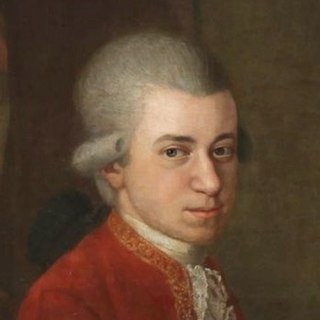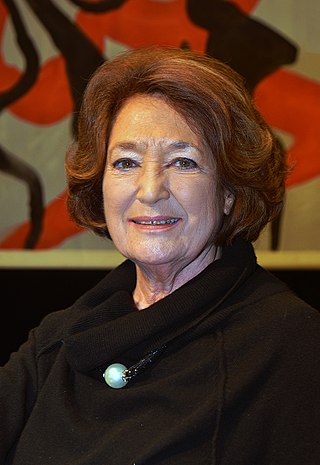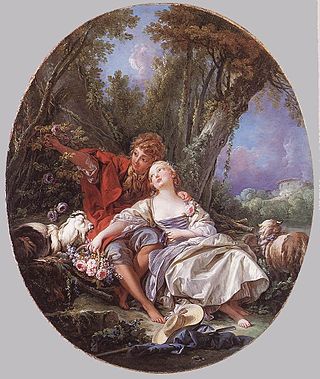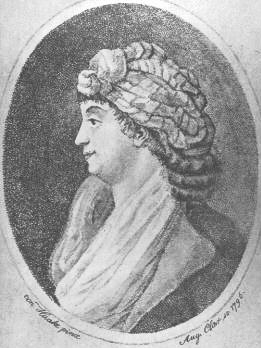
Così fan tutte, ossia La scuola degli amanti, K. 588, is an opera buffa in two acts by Wolfgang Amadeus Mozart. It was first performed on 26 January 1790 at the Burgtheater in Vienna, Austria. The libretto was written by Lorenzo Da Ponte who also wrote Le nozze di Figaro and Don Giovanni.

Exsultate, jubilate, K. 165, is a 1773 motet by Wolfgang Amadeus Mozart.

Lo sposo deluso, ossia La rivalità di tre donne per un solo amante is a two-act opera buffa, K. 430, composed by Wolfgang Amadeus Mozart between 1783 and 1784. However, the opera was never completed and only a 20-minute fragment from act 1 exists.

Maria Aloysia Antonia Weber Lange was a German soprano, remembered primarily for her association with the composer Wolfgang Amadeus Mozart.

Symphony No. 35 in D major, K. 385, also known as the Haffner Symphony, was composed by Wolfgang Amadeus Mozart in 1782. It was commissioned by the Haffners, a prominent Salzburg family, for the occasion of the ennoblement of Sigmund Haffner the Younger. The Haffner Symphony should not be confused with the eight-movement Haffner Serenade, another piece Mozart wrote on commission from the same family in 1776.

Edda Moser is a German operatic soprano. She was particularly well known for her interpretations of music by Mozart. Her 1973 recital LP Virtuose Arien von W.A. Mozart received the Grand Prix du Disque.
A coloratura soprano is a type of operatic soprano voice that specializes in music that is distinguished by agile runs, leaps and trills.
"Vorrei spiegarvi, oh Dio!" is a soprano aria by Wolfgang Amadeus Mozart.

Bastien und Bastienne, K. 50 is a one-act singspiel, a comic opera, by Wolfgang Amadeus Mozart.

"Dove sono" is an aria in Italian for lyric soprano from the third act of Mozart's 1786 opera Le nozze di Figaro. Countess Almaviva laments, in an initial recitative, that her husband has become a philanderer, and that she must rely on assistance from her maid to manipulate him. In the aria, she calmly remembers moments of love, and hopes, with increasing agitation, that her persistence may make him love her again. It is frequently performed in recitals and featured in anthologies of vocal music for lyric soprano.
Johann Ignaz Ludwig Fischer, commonly called Ludwig Fischer, was a German opera singer, a notable bass of his time.

Günther von Schwarzburg is a Singspiel in three acts by Ignaz Holzbauer set to a German libretto by Anton Klein. Loosely based on events in the life of the 14th-century German king, Günther von Schwarzburg, the opera premiered on 5 January 1777 at the Hoftheater in the Mannheim Palace.

"Conservati fedele" is a concert aria for soprano and orchestra by Wolfgang Amadeus Mozart.
"Ch'io mi scordi di te? ... Non temer, amato bene", K. 505, is a concert aria by Wolfgang Amadeus Mozart for soprano, piano obbligato and orchestra, composed in December 1786 in Vienna. It is often considered to be one of his greatest compositions in this genre.
Cyndia Sieden is an American coloratura soprano on the opera and concert stages.
"Per questa bella mano", K. 612, is a concert aria by Wolfgang Amadeus Mozart for solo bass with an obbligato double bass. Composed in Vienna, it is dated 8 March 1791 in Mozart's own catalogue. It is well known by players of the double bass, with difficult scale work and double stops. It may have been composed as an interlude in a performance of an opera buffa, written by another composer. The aria remains a popular and often performed concert piece today.
"Popoli di Tessaglia! – Io non chiedo, eterni Dei" (K. 316/300b) is a recitative and aria for soprano and orchestra that Wolfgang Amadeus Mozart wrote for Aloysia Weber. It is famous for including two occurrences of a G6, i.e. the G above high C, or 1568 Hz by modern concert pitch – according to the Guinness Book of Records, the highest musical note ever scored for the human voice. (However, an A6 is scored in Ignaz Umlauf's Das Irrlicht, also sung by Aloysia Weber.)

"Ah! perfido", Op. 65, is a concert aria for soprano and orchestra by Ludwig van Beethoven. The dramatic scena begins with a recitative in C major, taken from Pietro Metastasio's Achille in Sciro. The aria "Per pietà, non dirmi addio" is set in the key of E-flat major, and its lyricist is anonymous. A performance takes about 14 minutes.
"Ah, lo previdi!” – “Ah, t’invola” – “Deh, non varcar", K. 272, is a concert aria by Wolfgang Amadeus Mozart for solo soprano and orchestra, one of Mozart's first large-scale operatic concert pieces.
"Voi avete un cor fedele", K. 217, is a concert aria by Wolfgang Amadeus Mozart for solo soprano and orchestra, composed in Salzburg, dated 26 October 1775. Written around the time of the composition of Mozart's five violin concertos. In this aria, the character Dorinda contemplates a new romantic partner.










